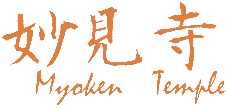

Myoken Bodhisattva
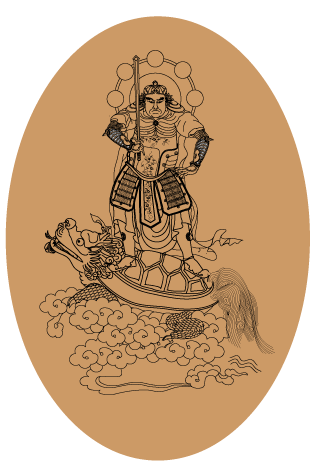
Myoken is known as the God of the North Star who is also the guardian of horses. Myoken is also referred to as a Bodhisattva because of his compassionate guidance. Myoken has also been respected as the god of healing eye-disease.
A samurai family associated with Myoken Bosatsu was the Nose clan who ruled the northern part of present-day Osaka. There was a hall on Mount Nose, traditionally associated with the ancestors of the Nose clan, where an image of Myoken was housed. In 1605, the head of this clan, Nose Yoritsugu, converted to the Nichiren sect, and this location became a centre for Nichiren devotees who embraced the worship of Myoken Bosatsu. The image of Myoken Bosatsu associated with the Nose clan shows him with a fierce facial expression, wearing armour and helmet, and holding a sword above his head - an image more suited to a samurai warrior rather than a compassionate bodhisattva. The diversity of regional iconography indicates that the worship of Myoken Bosatsu was not based on one doctrinal or scriptural source, but was rather a popular belief that absorbed a wide variety of traditions over the centuries in a number of different localities.
In ancient times, both samurai and farmers made the journey to Mt. Myoken to pray for good horses. Many statues of horses line the walkway up the mountain on the path to present-day Myoken Temple. Legend suggests that Myoken came down from the mountain and landed on a tree branch to speak with Nichiren Shonin just before he went to Izu from Kamakura. The mountain would later become a pilgrimage site for Nichiren Buddhists. Nichiren referred to Myojoten which is believed to be a reference to Myoken.
In the 1600s, Nichiken established a temple atop the mountain. The current temple was built around 10 years ago and also sits is atop Mt. Myoken. It is a glass and metal construction in a star shape. In its center is a shrine with a small statue of Myoken. Floating in the air are the four Bodhisattvas of the Earth. All the floors are glass except the bottom one, so when you enter the main hall (3rd floor) you are floating in the air with the Bodhisattvas. Myoken is sometimes depicted standing on a turtle slowly crossing the night sky or on a rock with his sword held over his head.
Myoken is a Bosatsu or Bodhisattva of Big Dipper or the divinized Big Dipper (Sudrsti in Skt). In ancient days, navigators relied on the Big Dipper like a compass, whereby navigators, merchants and those who gained profits by sea transportation began to worship the Big Dipper as the god, or Bodhisattva of safe voyage, calling it Myoken Bosatsu.
The connection has not been forgotten in Nichiren Buddhism and Myoken shrines can be found in many Nichiren Temples including Houston, Texas. He is prayed to by many for guidance.
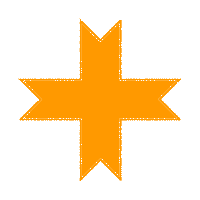
Below are a few pictures of Rev. Faulconer and then still Shami Myokei visiting Mt. Myoken, 2006.
Mt. Myoken is located about a hour or so southwest of Kyoto by car. It is off the beaten path and is difficult to get to by train. Easiest method is by car. You can drive most of the way up the mountain these days but the parking lot is still a ways down the hill. The image below is from Google Maps Japan. If your browser supports Kanji, put in the characters for Mt. Myoken (seen in dark characters at the top of the picture) and you will be taken directly to the map. Sorry, but it does not work to well with roman characters. On the map you can see the star shaped Myoken hall. A grouping of other halls, shrines and living quarters for the ministers can also be seen.
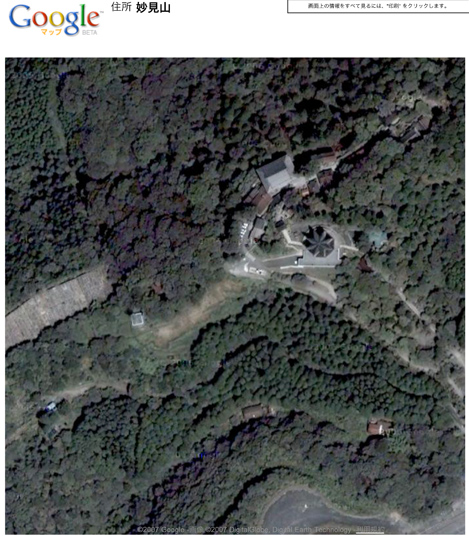
Shami Myokei heading toward the path leading to the top of the mountain.
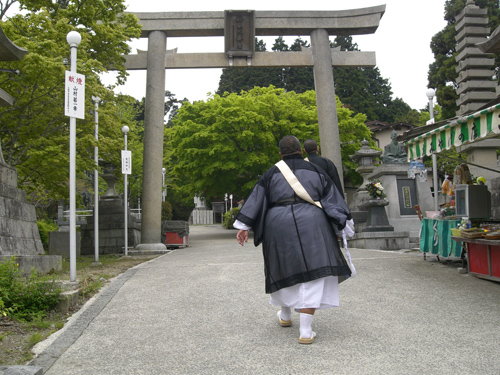
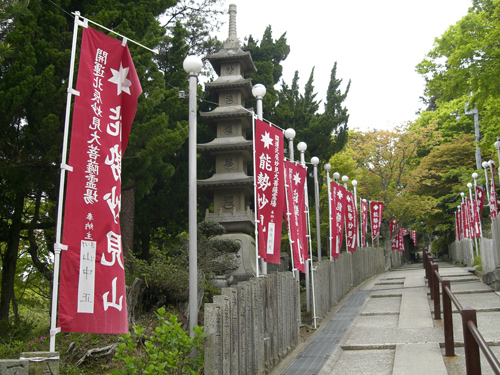
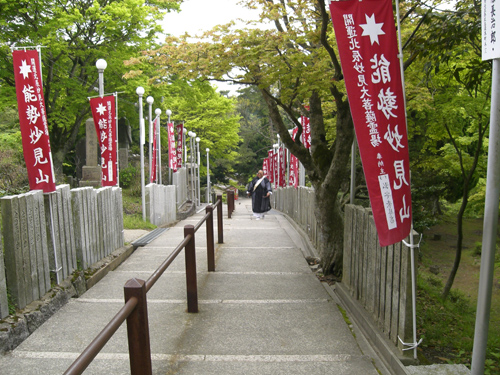
As you get closer to the top the Myoken hall comes into view.
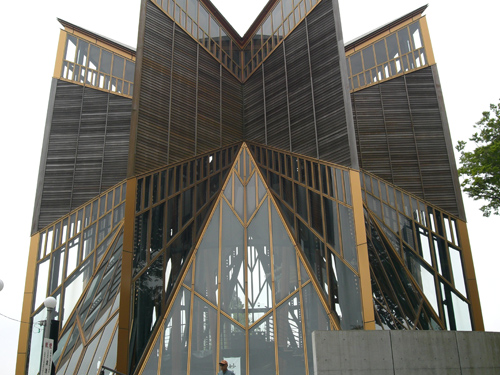
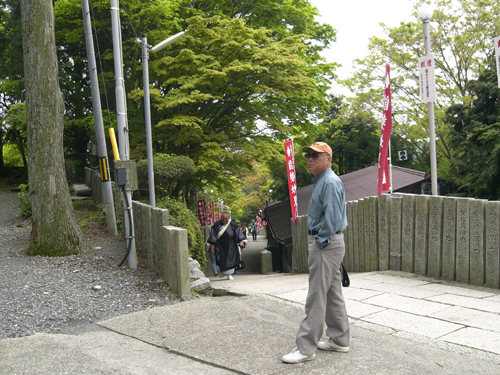 Almost there.
Almost there.
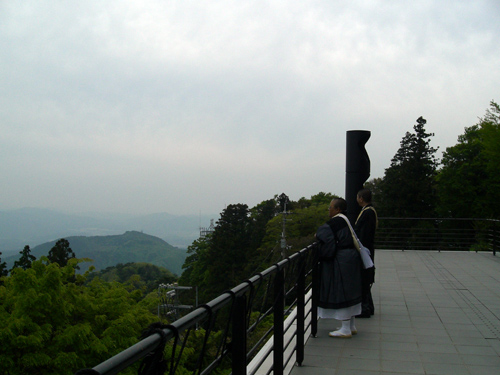
The view from the main platform just outside the Myoken hall. Mt. Myoken is located in a remote mountanous area.
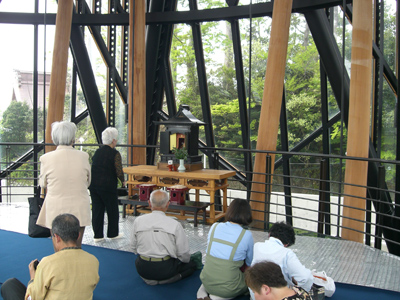
On the third story of the Myoken hall is the Altar. The floor is glass so that you can be in the air with the Bodhisattvas of the Earth. Here a carpet has been put down as many people were getting nervous about stepping out onto the glass and being able to see three stories down. They did pull the carpet back for us to get the feeling. Because it was Myoken's feast day many people were visiting the Temple and special services were being held. You can see the corner of the old main hall through the glass from here (left hand side of picture above). It is just around the corner of the summit from the new main hall. The alter in this hall is purposely very simple and small.
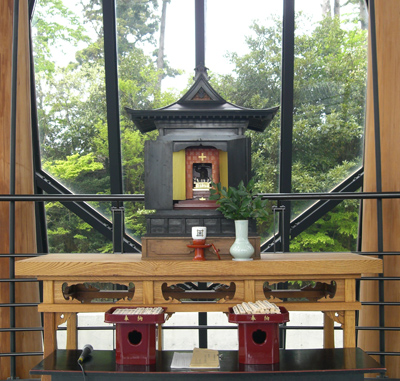
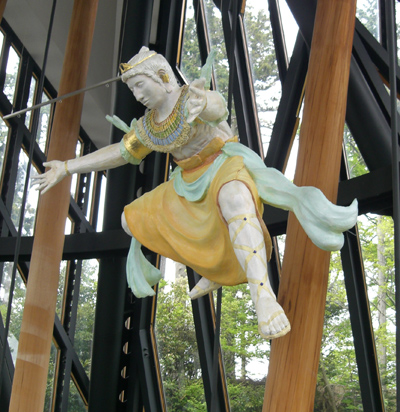
The Four Bodhisattvas are done in a lifelike manner suspended from the ceiling above your heads on either side. Two are represented as male and two as female.
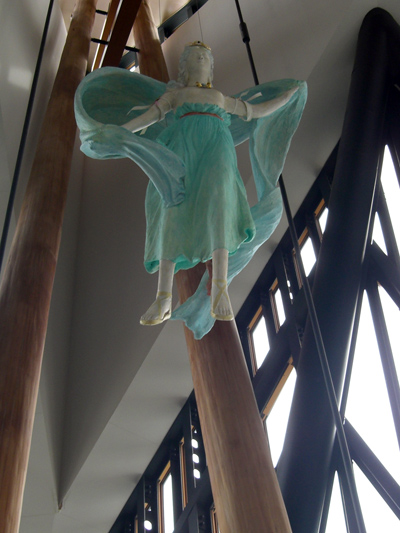
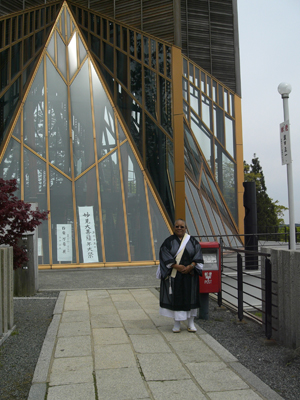
To the side of the Myoken hall the path winds to the other side of the summit where the Hondo (main hall) and several older more traditional buildings sit. The original Myoken hall is also present in this location.
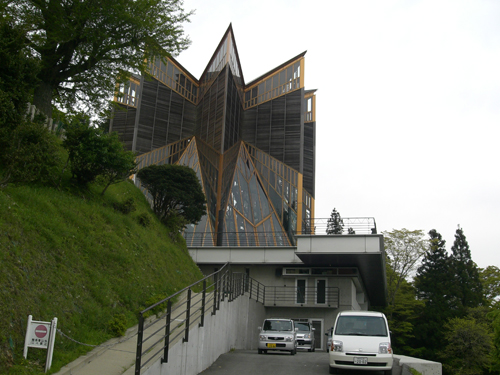
It was in the Hondo that we met with Bishop Ueda and received the beautiful Omandala that he had made with the help of this wonderful artist for the Houston Temple. The image of Myoken was created by the artist while sitting in front of the original statue housed in the old Myoken hall.
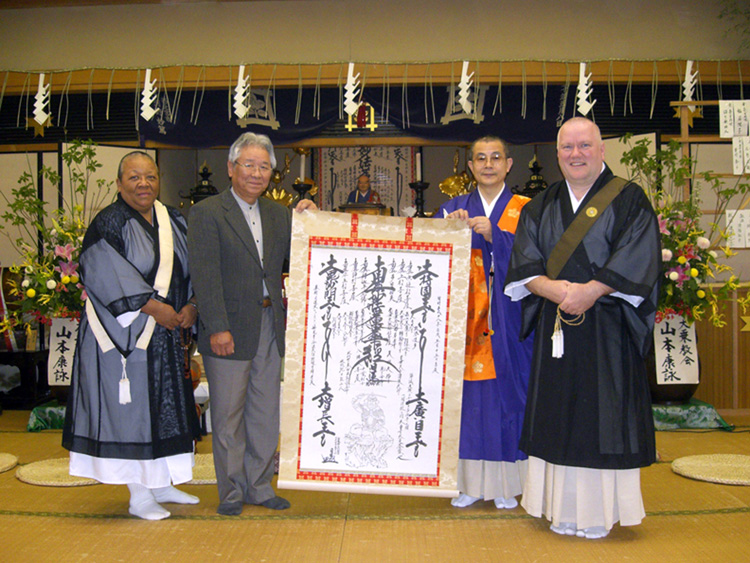
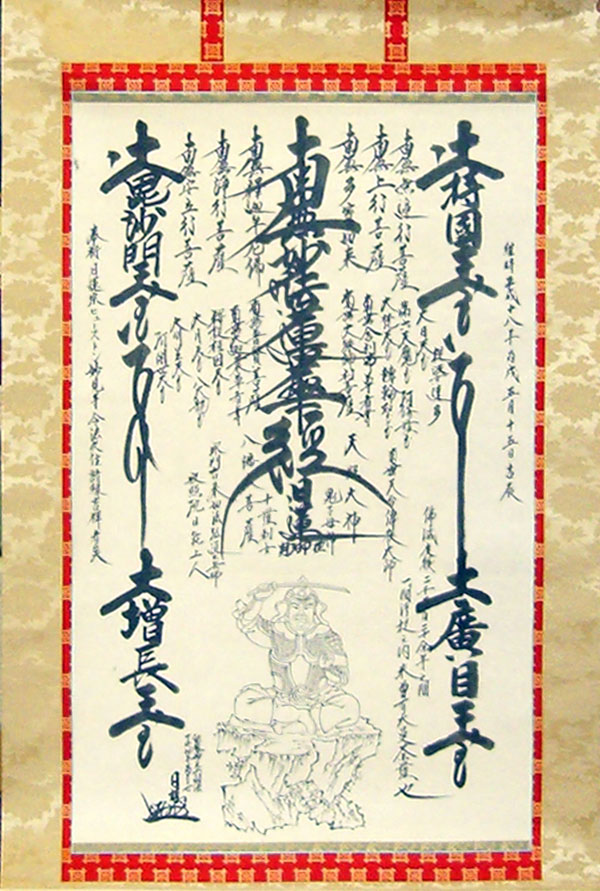
The Houston Temple's Omandala.
The Myoken image at the top of page was drawn by Rev. Ryuoh Faulconer.
Please do not use any of these images without first getting permission from Rev. Ryuoh Faulconer or Rev. Myokei Caine-Barrett.